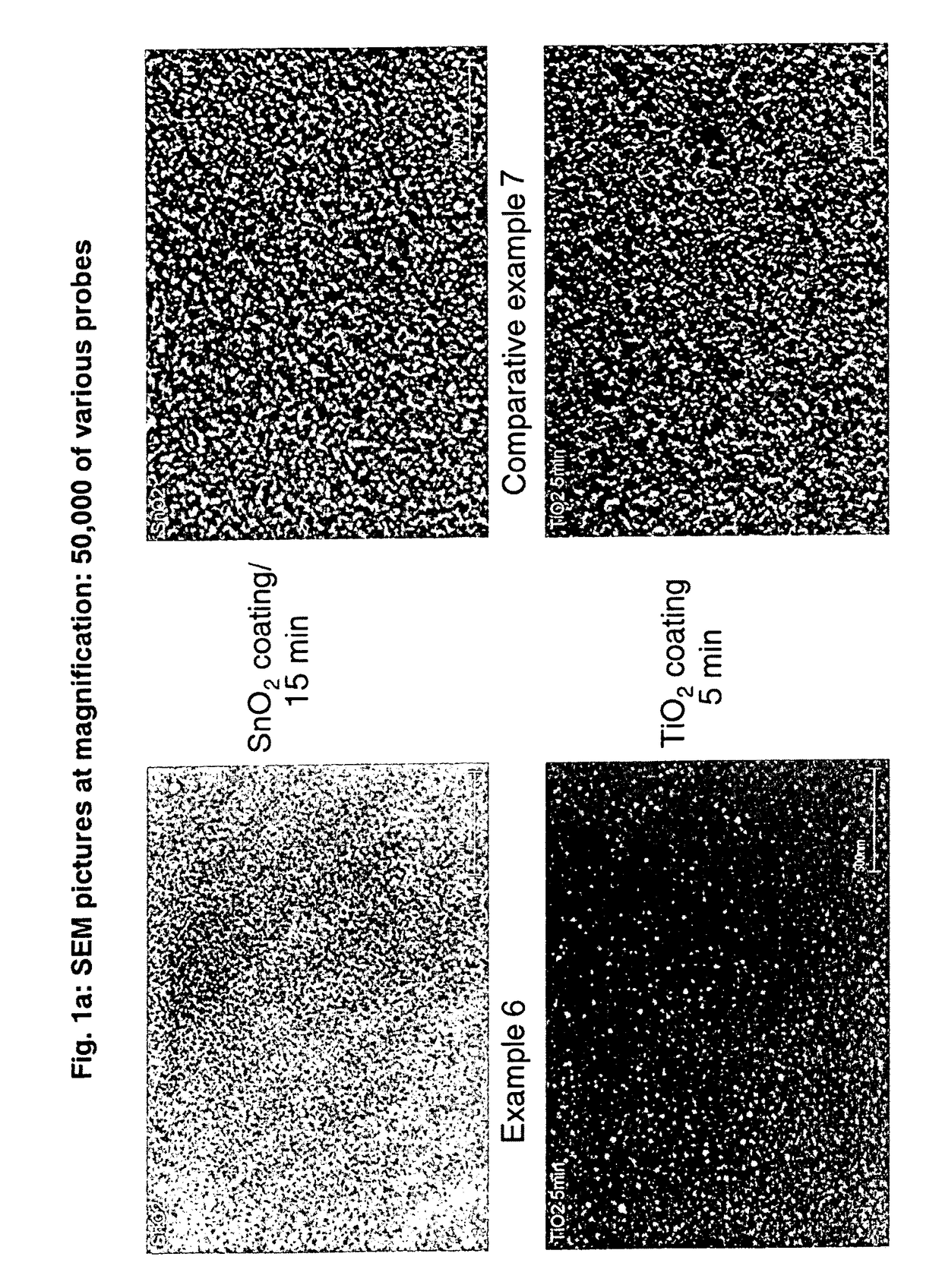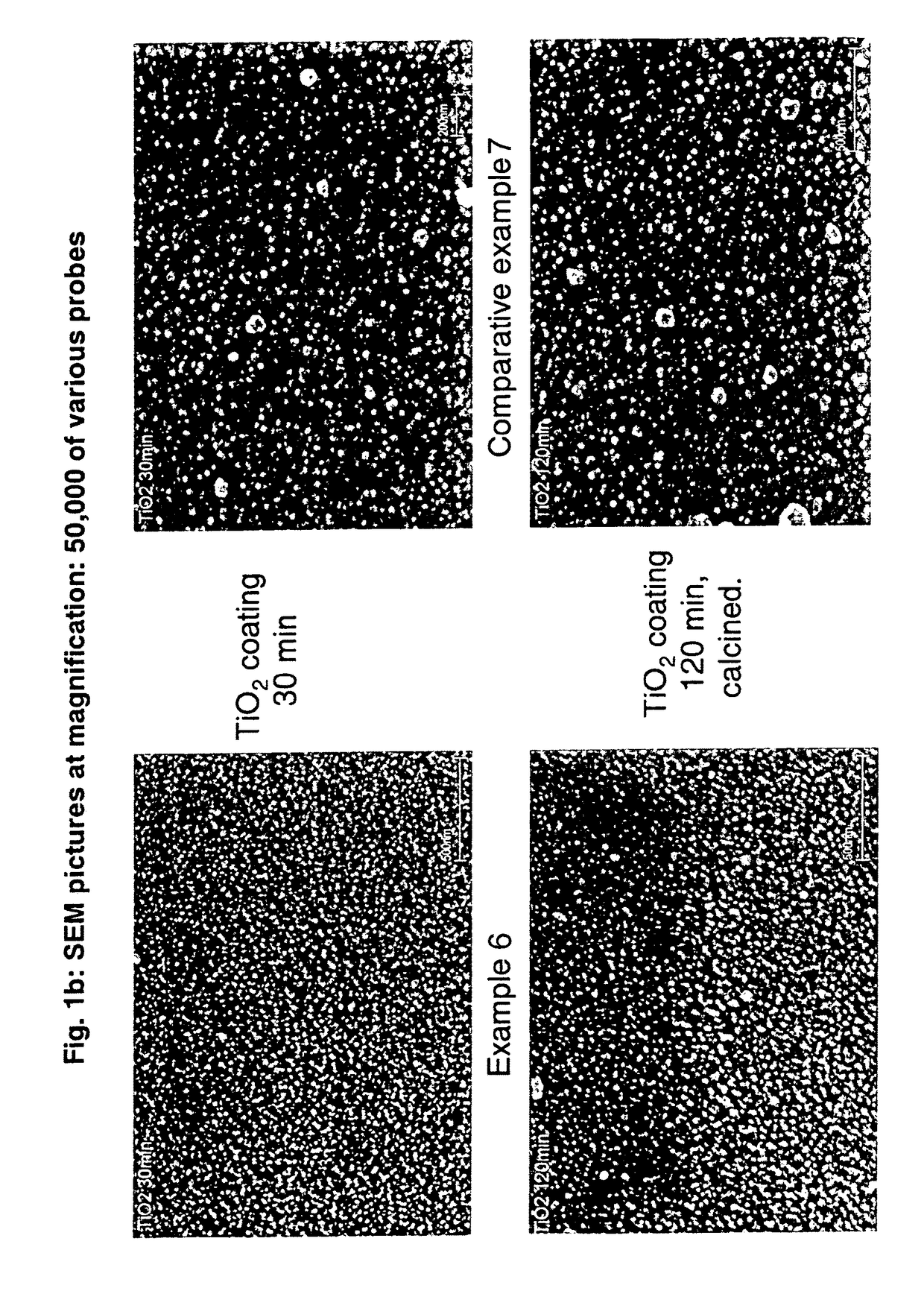Effect pigments comprising a glass flake substrate
a technology of effect pigments and glass flakes, which is applied in the field of effect pigments comprising glass flakes, can solve the problems of poor quality of effect pigments obtained according to the teaching of u.s. pat. no. 3,331,699, poor quality with respect to today's requirements and expectations, and high softening point, etc., to achieve better gloss and skin feeling properties.
- Summary
- Abstract
- Description
- Claims
- Application Information
AI Technical Summary
Benefits of technology
Problems solved by technology
Method used
Image
Examples
example 1
[0169]200 g of glass flakes (supplied by Glassflakes Ltd. Forster Street Leeds LS10 1 PW, United Kingdom) having a composition as specified in Table A with a mean particle thickness of 1 μm and particle diameters in the range of 50-150 μm and a d50 of 88 μm were dispersed in 2 l of de-ionized water and the suspension was heated up 80° C. under stirring. Subsequently, the pH was adjusted to 1.9 using diluted hydrochloric acid and an acidic solution of 3 g SnCl4*5H2O in 60 ml of diluted hydrochloric acid was added to the suspension within 60 minutes. Simultaneously, a solution of sodium hydroxide (10% W / W in water) was metered in order to keep a constant pH of 1.9. After the addition of the tin compound, the reaction mixture was stirred for 15 min to complete the precipitation. Then, the pH is lowered to 1.6 using diluted hydrochloric acid and a solution of TiCl4 in water (400 g TiCl4 / l) was added to the suspension with 0.33 ml / min. The pH value was kept constant at 1.6 by co-dosage o...
example 3
[0173]Analogous to example 1, but the TiCl4-solution was added for 23 h with 0.33 ml / min leading to a pearlescent pigment with intensive red interference color.
example 6
[0179]The early stages of precipitation of SnO2 and of TiO2 were analysed. For this purpose, example 1 was essentially repeated, however small samples of coated glass flakes were taken at defined reaction times of the reaction mixture (Table 1). The coating with TiO2 was finally already stopped at 2 hours.
[0180]The samples were dried under vacuum at 60° C. The last sample was calcined for 30 minutes at 650° C.
[0181]The surface of the samples were analysed by SEM at different magnifications.
PUM
| Property | Measurement | Unit |
|---|---|---|
| refractive index | aaaaa | aaaaa |
| particle size | aaaaa | aaaaa |
| thickness | aaaaa | aaaaa |
Abstract
Description
Claims
Application Information
 Login to View More
Login to View More - R&D
- Intellectual Property
- Life Sciences
- Materials
- Tech Scout
- Unparalleled Data Quality
- Higher Quality Content
- 60% Fewer Hallucinations
Browse by: Latest US Patents, China's latest patents, Technical Efficacy Thesaurus, Application Domain, Technology Topic, Popular Technical Reports.
© 2025 PatSnap. All rights reserved.Legal|Privacy policy|Modern Slavery Act Transparency Statement|Sitemap|About US| Contact US: help@patsnap.com


